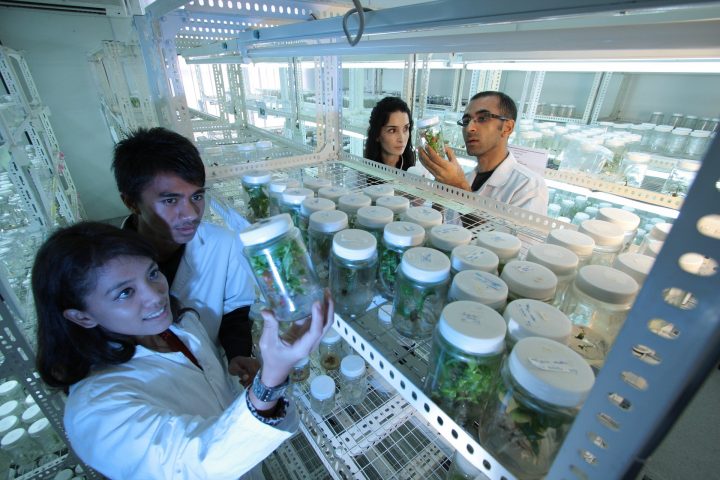Flow in and between innovation, management of innovation, and innovation policy could benefit the whole society: it could mean increased efficiency, resilience, happiness, and sustainability all over the world. But the goals and environments that bring Flow to these fields have little in common – posing a challenge to stakeholders of innovation trying to create Flow-nurturing environments.
In this blogpost I will give a short introduction to flow, innovation, management and policy, describe my personal experience and suggest good practices to increase flow for participants in the innovation process to let innovation flow.
What is flow and why does flow at the workplace matter?
When a person is in Flow, the person is fully absorbed in an activity, is immersed in a feeling of energized focus, and feels enjoyment while performing it.
Experiencing Flow at the workplace is a gift for all parts: the employers benefit from self-motivated, content employees that perform at their peak, which leads to soaring productivity, and the employees feel deeper satisfaction and enjoyment, leading to happier lives for themselves and their surroundings. Thus flow in the workplace is a win-win-win situation: win for the employee, win for the employer and win for their environment. And as we spend about 80000 hours of our lives at the workplace – let’s spend this time well, thus as much as possible: in Flow!
How to achieve Flow mental state?
Goals must be set, but the question is how, how to achieve flow? Well, by setting our goals, we have already taken a step in the right direction to achieve flow. Relevant and timely feedback, and challenges that are appropriate for the skills of employees are some of the other requisites to achieve the state of flow. This is exactly where the problem lies in the case of innovation policy and innovation management. Let’s see why by understanding more about policy, management and innovation.
Innovators, innovation
Innovation processes are extremely uncertain, with a long lead time, are collective and cumulative, thus by definition causing many challenges to introduce flow, as timely feedbacks are next to impossible due to the long waiting time, but even with extremely patient employees, feedback might not be relevant due to the inherent uncertainty of innovation processes, and this uncertainty is largely independent of the efforts invested in the innovative work.
However, I could often achieve flow when conducting research: trying to solve a problem, coming up with ideas, proposing solutions, even when they did not work, in a supportive environment, where free and fun brainstorming together with colleagues is a daily routine, conducting research became a flow-inducing process for me. Thus the collectivity and cumulative properties of innovation helped me to achieve flow, and the adequate support of lab assistants that enabled us to try out our ideas was crucial in achieving timely feedback (even when negative) and keeping up our enthusiasm. The freedom of brainstorming, the possibility to ask questions to nature (in other words: to play) and the feeling of being part of something bigger, that could benefit humanity and the world, all contributed to my experience of flow and the happiness guarantee .
Nevertheless, this nurturing environment was regularly destroyed by duties that seemed not relevant or useful, but hindering our efforts. I will mention here some of those: nurturing a competitive atmosphere, when research is a collective and not a competitive endeavor; the need to track down research hours, while research is not a 9 to 5 job, ideas might come up under the shower, while discussing during lunchtime, taking a long walk in the hills, etc. These little issues could be supportable, but to get funding or access to some research facilities, researchers have to apply and then wait years for receiving a grant: in that time new ideas might come in one’s mind and the old ones might lose their priority, the enthusiasm for them might fade by the time the researchers receive the opportunity to try those ideas out. How could this be handled by management and policy?

Management
The widespread Hobbesian and Weberian approach to bureaucracy and management might be considered in an organisation, where the tasks and roles are foreseen and well defined, where people are working as clogs in the machine, but in a complex organisation dealing with innovative processes, this approach loses its advantages, as innovation is inherently uncertain. While planning, measuring some kind of efficiency, defining KPIs are still possible in such organisations, they might be considered (and based on my personal experience: rightly so) irrelevant, flow-decreasing for the participants of the innovation process, by adding irrelevant constraints to their work and externalizing motivations that are otherwise more internal and thus more flow-inducing.
Still, decision-makers need KPIs to be transparent, otherwise, they could be considered inconsistent or unfair, without the possibility to defend themselves. Here, I would suggest an approach that is already widespread in handling teachers in Finland: teachers go through a competitive selection process and highly challenging training, by the end of which they receive freedom for their teaching. Such a model could be introduced for innovators: if they finished a highly challenging university with good degrees, they could earn a fair salary and be given freedom in their research, without hindering administrative requirements. On the other hand, managers of innovation could still have an important role, their skills could be highly beneficial for innovation: they could be responsible for organizing the supply process, so that the innovators have the right ingredients, circumstances, atmosphere, and mental-wellbeing for innovating.
Policy – politics
The work of managers of innovation is tightly tied by the innovation policies present in the societies they operate in. These innovation policies are created to serve and harmonize a wide range of needs, for example, the society’s need to have clear rules, goals, and the policymakers’ need to be transparent. Adding to the complexity, policymakers operate in a world, where the laws are not fixed, they can be changed to fit the needs and are creating rules for innovators, who operate in a world, where the laws are fixed, given by nature, but not fully known.
My experience is that as policymakers are held accountable for their decisions, but innovation can not be foreseen, there is a desire to contain risk related to innovation from the policy side. However, in highly uncertain processes the larger the pool sharing the risks, the more benefit is accumulated by the society and each individual in the pool. Thus the aim of reducing risks in innovation on the policy level is counterproductive for the society. Is there another way to do innovation policy? Yes: by not holding policymakers (or any other participants in innovation) responsible for the outcome of innovation, but for their decisions about creating an innovation-nurturing environment, thus whether their policies support the creation of a Flow-inducing atmosphere for innovators.
Luckily, the Leadership & Flow Program and other Flow researchers all around the world have already presented ample results about how to introduce flow, thus this task, while challenging, is achievable: it might be a suitable one for talented policy-makers to help them achieve the state of… Flow!
By: Veronika Poór
Expert in innovation policy, with decade-long international experience in innovation, management and policy.

